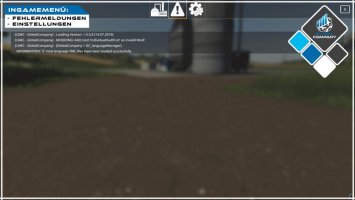

Tania is a free and open-source farm management software.

The project is released under the GNU General Public License. Originally built by a community of farmers, developers, and researchers, farmOS is a modular system that allows developers to extend it by building modules on top of it. farmOS allows farmers and farm managers to manage locations, events, records, assets, people, and inventory. It is built on top of the Drupal CMS and is ideal for large farms. The farmOS application is a web-based solution for farm management, planning, and record keeping. Please note that this is an evergreen post, which means we will regularly update it with new findings. In this post, we present the best open-source farming apps that we could find. Unlike commercial software, open source software is often supported by a large community of users and developers.Īs an added bonus, you own your own data because it is installed on your machines, which is not the case for many commercial SaaS apps. Open source programs or software are free applications that allow anyone to use, download, and examine the source code, and sometimes build on it. But first, what is an open source program? We have reviewed several commercial farming software options aimed at large farms and livestock establishments, but we also offer open-source counterparts or alternatives that you can use freely on your own farm. Other larger farms opt for software to manage their workflow, livestock, and farming spaces.

Even if you have a dog or dogs, it's still worth considering. The first adaptation of technology for farms was the use of security CCTV systems with motion detection support, to protect small farm animals from predators and the farm from thieves. Technology has made it easier for farmers to make informed decisions about planting, harvesting, and selling their crops by providing information on weather patterns and market prices.Īll of these innovations have helped to increase efficiency and profitability in farming, making it an exciting time to be in agriculture. This information can then be used to fine-tune farming practices and optimize yields. By embracing technology, farmers can now collect and analyze data on everything from soil moisture levels to plant growth rates. While it's true that some farmers prefer to stick to traditional methods and manage everything themselves, there is no doubt that technology has been a game-changer in the agricultural sector.

Farms may vary in shape, size, and specialization, but with persistence and discipline, they are all manageable.


 0 kommentar(er)
0 kommentar(er)
